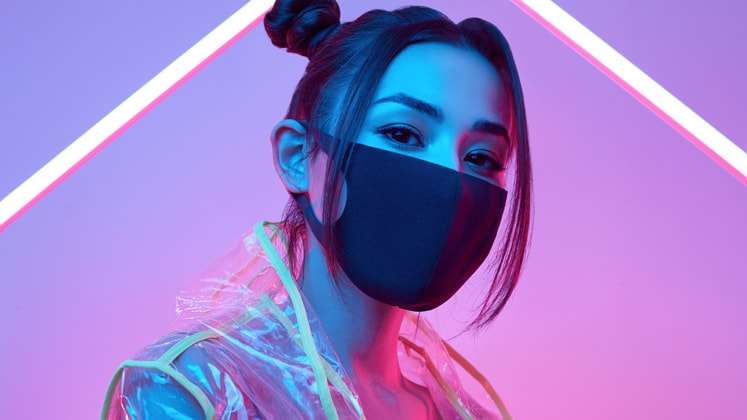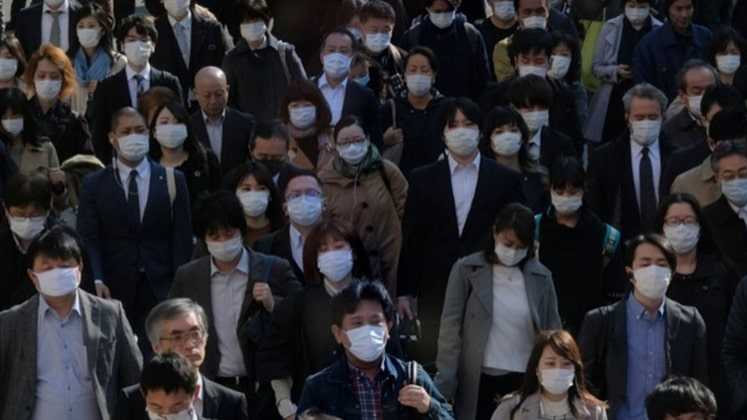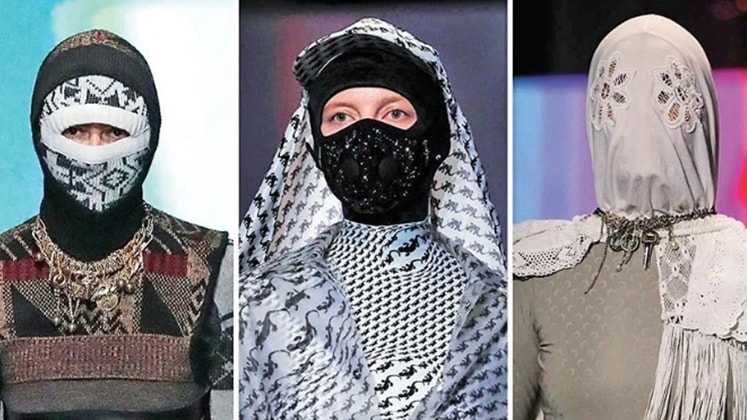
A few years back, what children expected of 2020 were ideas from humankind’s most ambitious brains – a boom in technology, flying cars, outrageous fashion and so much more. What we did see in 2020 were bushfires, increased pollution, and a pandemic that has forced the world to stay indoors. Our trends have changed and are still in the process of further changes, as we try to protect ourselves and everyone around us from the deadly novel coronavirus.
‘Social Distancing’ became the new buzzword. Countries around the world were enforcing complete lockdown, and as numbers rose, India announced the lockdown too. Within a span of few days, the entire country went from taking a bus to work in the morning, shopping at malls, going to college or school and carrying on with our regular routines outside our living spaces to staying inside, working or studying through online platforms, stepping out only if it was absolutely necessary and trying to be as self-sufficient as we could afford to be.
Protection gear or Personal Protective Equipment (PPE) suddenly occupies a central role in our lives today. Masks, gloves, hazmat suits, and sanitisers play a key role in curbing the spread of this deadly virus, or ‘flattening the curve’. The most important and commonly used is the mask.

The mask as a product has grabbed a lot of attention suddenly due the current pandemic. Everyone has to be seen wearing it when they step outside. It has become the new norm and a common sight on the streets. But in countries like Japan and South Korea, wearing a mask has always been the norm. The people from these countries wear masks on a daily basis to protect themselves against pollution, air borne diseases, germs and also from preventing the spread of germs to others.
In India, the air quality in cities like New Delhi has been alarmingly low and poor. There has been a rise in respiratory problems amongst the city dwellers due to which many were seen covering their faces with scarves and stoles for protection. The recent bushfire in Australia has seen a huge drop in the air quality due to which many in the country started wearing masks. The mask had the reputation of being a clinical product beneficial only for the medical workers and patients. But now due to the environmental and climatic crisis around the world and mostly due to the current health crisis, the perception towards this product has changed overnight.

There have been mask making companies much before the pandemic in the market. FREKA, which is UK based, is known for making gas masks. North California based VOGMASK design eco-friendly masks to protect against air borne particles, dust and germs. TECMASK, based in Australia and launched in Japan, became one of the top selling masks company during the bushfire crisis in Australia.
Marine Serra, a French designer, created a stir for making face masks for the Paris Fashion Week Fall/Winter 2020. American designer, Mah Jing Wong, designed a couture mask for the singer and rapper Cardi B for the Paris Fashion Week 2020 show. Gucci, an Italian fashion label, designed a mask for the singer Billie Eilish for the 2020 Grammy’s Awards event.
The pandemic was an eye-opener for all the nations to realise how poorly we are all equipped and so less prepared to face health crisis even today. Even the best known medically well-equipped nations like Italy and the US failed in this crisis. Sadhguru, the popular Indian yogi and author, rightly quoted in one of his sessions on this as ‘It is never enough’ and how true he was if we ponder upon this thought. There have been acute shortages in the availability of masks for the frontline medical workers which shook everyone. It is disturbing to know the facts and the pathetic conditions under which these frontline workers had to work putting their own health at risk.
Witnessing the panic situation that the health workers were in due to the shortage of mask, the fashion industry made a huge contribution. Many big giants in the fashion industry like Chanel, Prada and Fendi have shifted their production lines to making masks to help the community of health workers. Spanish clothing retailer, Zara, is making masks for medical workers in Spain, whereas French luxury retailer, Louis Vuitton, is making masks, hospital gowns and hand sanitisers for the health workers in France. The pandemic has witnessed generous contributions made by the fashion industry, but this could also result to be the only way for them to survive in the much-predicted recession which is already making an impact on their businesses. The extended and unprecedented lockdown announced by many countries across the globe brought many financial activities to a halt shaking the big giants and paralysing and almost wiping out the smaller ones out of business. Making masks or making products that are in shortage amidst the virus outbreak could be the only source of generating revenue to survive and sail through the recession period.
This product is going to be a trend that is going to stay and it does have the possibility of a broader reach of customers such as the youth. With campuses closed and classes cancelled, many campuses have started teaching through online mediums. This can be a challenging environment for the students to be in due to the sudden change from a physical classroom to a virtual one. Strict rules of social distancing may be implemented even after they return to their respective campuses where the challenges will be far more intense and greater. Social distancing is not a comfortable space to be in for the youth, as they have the tendency to socialise when surrounded by friends in the campus and their social behaviour may become more intense after having undergone a long period of lockdown and self-isolation. To follow the norms could be quite a task for them in such a situation. But wearing a protective gear could help reduce the risk by a huge margin. It is important that they are aware of the risk and to also make sure that those around them are aware of it too. Since they also have the desire to communicate and grab attention in ways of dressing to project themselves in a certain way, fashion plays an important role for self-expression for them. There are many influencers to inspire the youth in terms of dressing and self-expression.
Some of the influencers have been seen sporting a mask as an accessory in events, live shows and videos much before the pandemic. Billie Eilish, known for her distinctive style and impressive vocals, was seen wearing a Gucci mask to the 2020 Grammy’s Awards event. Rapper Cardi B, in the recent Men’s Fashion Week in Paris, wore a diamond encrusted face mask as an accessory. Ayo & Teo, a duo of dancers and musicians are known for their shark and panda masks. BTS, the K-pop band, usually wear black coloured masks while travelling, and this led to the popularity of the black mask in the market. The youth has the ability to change and make a difference. They can bring in positivity even in a scary and uncertain situation that we are all in today. The magnitude of this problem may accelerate the trend of wearing a mask even after we get back to our normal lives gradually. The fear associated with this virus and the necessity of a mask will be prevalent till a medical solution is introduced.
Making masks which are visually appealing to the youth could play a key role in making the product look less mundane. If masks could be worn as an accessory (with the appropriate properties for the fabric and construction of the mask for protection) to complement our outfits, mask wearing could become more engaging. With this thought and a gap observed in the market, many manufacturers and retailers exploring into this product category, may initiate that change in the way the youth view the mask – “something that hides but also communicates.”
There will be demand in the market when schools and colleges reopen. Hence, the attempt made by the students of the Textile Design Department, NIFT, Bengaluru, was to conceptualise on the key elements of self-expression, reflect the learning out of this pandemic and address rules to be followed by the youth and for the youth. These concepts may be printed on the mask that can be worn with any casual wear like a pair of denims, T-shirts, skirts, shorts, hoodies and dresses. Wearing masks with strong messages may bring in the much-needed changes in the campuses after they reopen.
This article has been contributed by Kakoli Das, Associate Professor, Textile Design Department, NIFT, Bengaluru , assisted by Nishtha Singh and Srijan (semester VI, NIFT, Bengaluru), Akanksha Jaishankar and Veda Shivakumar (semester IV, NIFT, Bengaluru) and students of Textile Design Department, NIFT, Bengaluru.
About Kakoli Das
A textile design student of 2002 batch of NIFT, New Delhi, Kakoli has worked in different export houses in New Delhi and Gurgaon as a textile designer for 4 years. After this, she ventured into the field of teaching in 2006, heading the textile design department in Pearl Academy in Chennai and has been associated with NIFT since 2008. Her areas of expertise are surface and print design. She has been actively involved in many industry based classroom projects.

Post a Comment